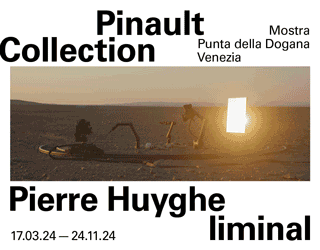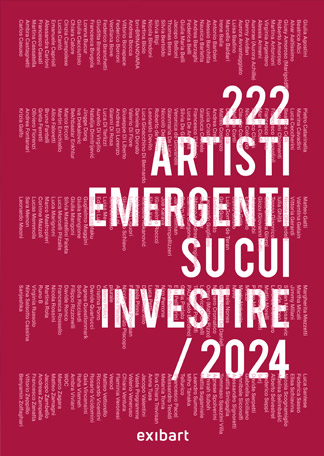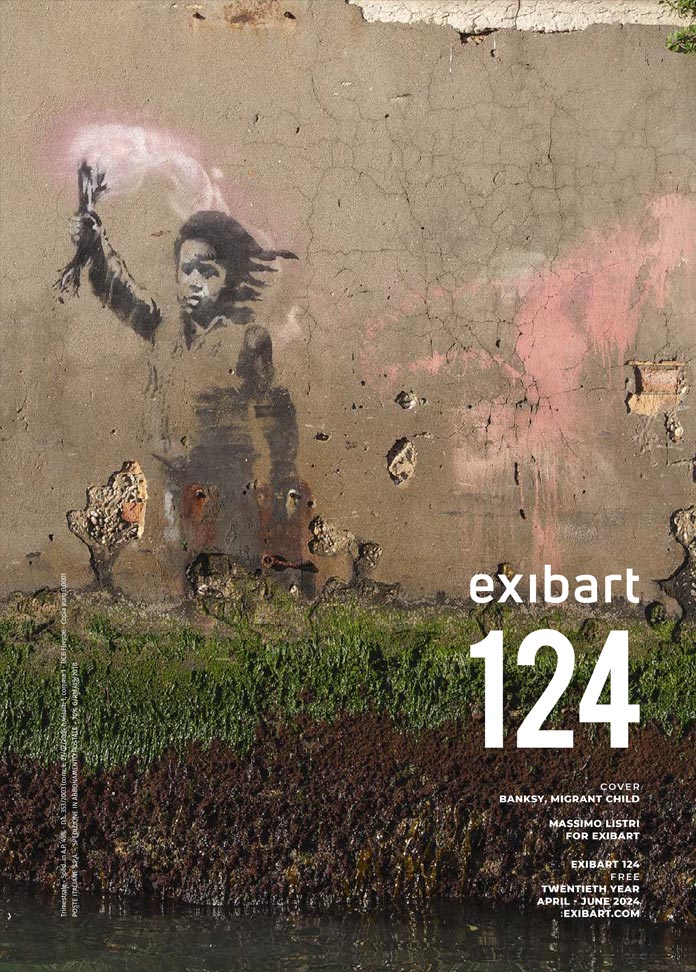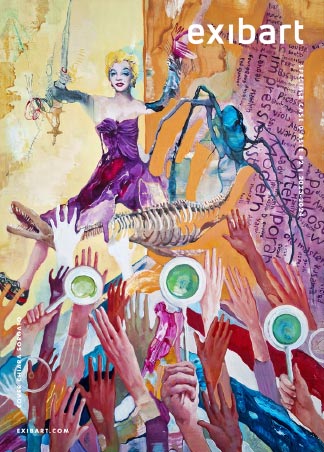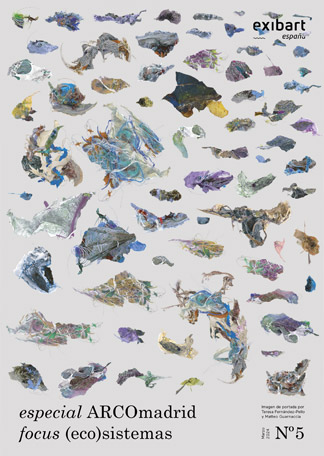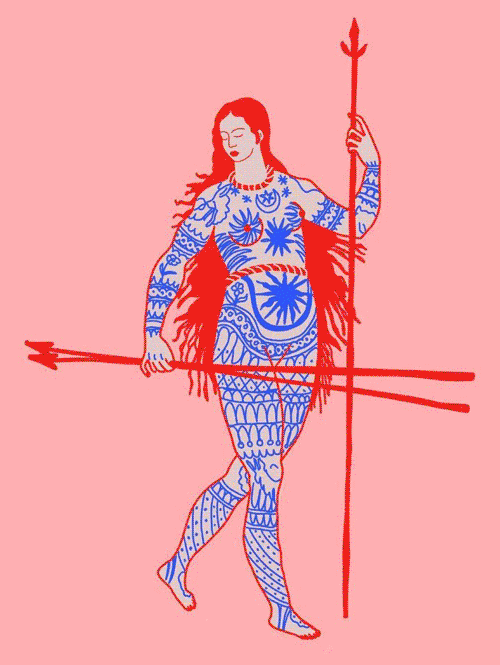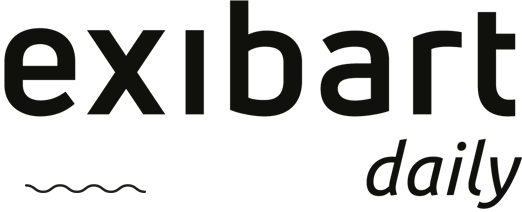-
- container colonna1
- Categorie
- #iorestoacasa
- Agenda
- Archeologia
- Architettura
- Arte antica
- Arte contemporanea
- Arte moderna
- Arti performative
- Attualità
- Bandi e concorsi
- Beni culturali
- Cinema
- Contest
- Danza
- Design
- Diritto
- Eventi
- Fiere e manifestazioni
- Film e serie tv
- Formazione
- Fotografia
- Libri ed editoria
- Mercato
- MIC Ministero della Cultura
- Moda
- Musei
- Musica
- Opening
- Personaggi
- Politica e opinioni
- Street Art
- Teatro
- Viaggi
- Categorie
- container colonna2
- container colonna1
La nostra indagine sulle gallerie al tempo del distanziamento sociale prosegue pensando al futuro. Dopo Galerie Lelong & co.e Hauser & Wirth, oggi diamo spazio all’ampia intervista con Emanuel Layr, che ha fondato la sua prima galleria a Vienna nel 2011 e che nel 2016 ha scelto Roma come sua seconda sede.
Segue la versione in inglese – English version below
Nelle ultime settimane assistiamo alla proliferazione di iniziative di beneficenza, i primi ad essere chiamati all’azione sono stati gli artisti. Credi che questo modello basato sulla gratuità del lavoro artistico possa creare un precedente rischioso per gli artisti stessi e per il loro mercato?
«Dipende molto dagli artisti, se e quanto possono permettersi di donare. Penso che sia complicato se gli organizzatori di tali eventi prendono in giro artisti non così ricchi e non così noti con potenziale attenzione e successo, e quindi non raggiungono la vendita né il successo promesso in termini di attenzione e riconoscibilità. Ovviamente, gli artisti non sempre danno il miglior lavoro, il che rende più difficile la vendita … Ecco perché il mio suggerimento per gli artisti è quello di selezionare con cura eventi del genere e di offrire meno lavori ma migliori. Se ha un prezzo conveniente e gli artisti possono realmente ottenere qualcosa.
In generale, direi che ogni tipo di beneficenza è benvenuta e necessaria. Se l’artista riesce a ricavarne qualcosa, diciamo un po’ di attenzione, penso che vada benissimo. Non mi piacciono gli eventi di beneficenza che non sono organizzati bene. Quindi nessuno ne ricava nulla. Personalmente non ho problemi con qualcuno che organizza eventi di beneficenza per motivi di pubbliche relazioni. A volte ovviamente potrebbe sembrare strano se alcune persone o aziende molto ricche donano noccioline e ottengono molta risonanza nell’opinione pubblica. Dovrebbero esserci dei limiti e, se questo va troppo lontano, è probabile che questo possa ritorcersi contro, come abbiamo visto di recente con un pittore e una galleria di spicco».
Quanto pensi che questo momento influenzerà l’economia del sistema artistico?
«Effetti enormi! Non so da dove iniziare, ma gli affari sono diminuiti drasticamente e tutto ciò che stiamo vivendo nelle vendite ora basato sulle conversazioni che sono avvenute prima. Quindi si è davvero fortunati se negli ultimi mesi riesci a costruire qualcosa in termini di guadagni e di rete.
Ovviamente ci sono meno mostre, ma penso che il problema principale sia che le istituzioni e le più grandi collezioni private abbiano problemi finanziari e sono attualmente troppo occupate da misure di ristrutturazione.
Naturalmente anche i collezionisti con budget più limitati sono preoccupati e molto esitanti con investimenti non essenziali. Ho la sensazione che alcune persone stiano tornando, ma non è facile comunicare opere che sono più complesse in termini di media attraverso l’online. Solo un certo tipo di arte è fatto per quello scopo. Quindi penso che la comunicazione digitale possa aiutare a capire meglio il lavoro già conosciuto o a incuriosire qualcosa che verrà visto più tardi nella realtà. Sono un grande fan di eventi molto piccoli.
Un altro problema per i musei è che alcune istituzioni più grandi stanno finendo i soldi, perché alcuni politici e direttori di musei erano ossessionati dall’idea che la qualità dei musei abbia a che fare con la quantità di visitatori.
Le mostre blockbuster pagano solo se hai molti visitatori. Ora musei che presentano questo tipo di mostre sono in grande difficoltà, perché non hanno visitatori … Quindi la domanda è, ovviamente, perché i musei stanno organizzando mostre come ad es. Van Gogh, Modigliani, Warhol … ancora e ancora?
Credo che nel 2021 vedremo esibiti molti lavori del 2019 e questo è un bene, perché non c’è motivo reale per mostrare sempre e solo opere nuove di zecca. L’arte non è stagionale. Quindi speriamo di rallentare la sovrapproduzione e interrogarci: quanto tempo è necessario per esperire l’arte? L’arte può e non può essere consumata velocemente».
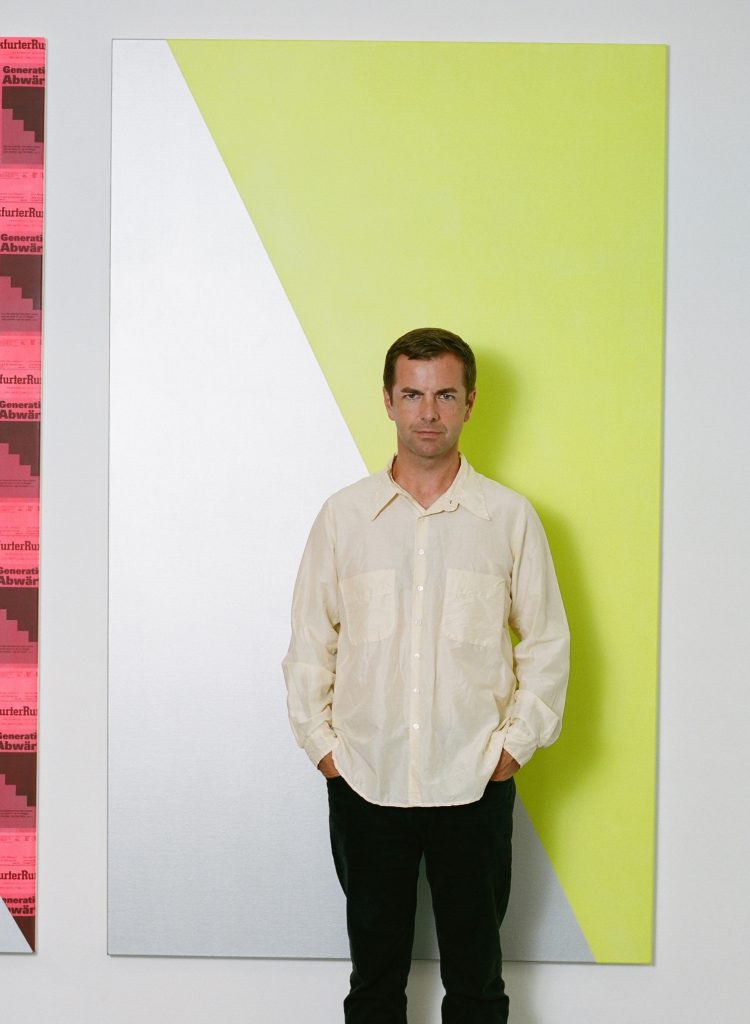
Pensi che con le prossime fiere sarà possibile coprire questo margine?
«La prossima fiera sarebbe stata Art Basel a Basilea, che ora è stata rinviata al 14 settembre, nella settimana prima di Cosmoscow a Mosca. Attualmente non ho idea di se queste fiere si faranno davvero e quanto avranno successo. Prendiamo le fiere d’arte sempre più seriamente e penso che l’intera situazione ci renderà ancora più selettivi, per quanto già in passato non c’erano più garanzie di vendere opere in una fiera, anche per gallerie più commerciali. Noi e gli artisti abbiamo realizzato opere d’arte o abbiamo riservato opere molto speciali per quelle occasioni. Ad esempio, per quest’anno ad Art Basel potremmo ottenere un’importante opera storica di Stano Filko che non possiamo e non vorremmo mostrare o offrire prima della fiera. Anche perché non è così facile capire il lavoro senza vederlo dal vivo. Lena Henke è nel mezzo di una produzione più ampia che avevamo già programmato di mostrare a Basilea a giugno, lo stesso per Cecile B. Evans – entrambe i lavori dovranno aspettare. Interessante anche il fatto che Giovanni Carmine, il nuovo curatore di Unlimited a Basilea, abbia selezionato un’installazione su larga scala di Philipp Timischl, che è già in produzione. La mia sensazione è che tutte quelle opere possano essere mostrate anche in seguito. Non sono cose stagionali. Sono opere importanti che penso saranno interessanti anche negli anni a venire … Il problema è che abbiamo tutti investito nel preparare questi lavori e non saremo in grado di mostrarli o venderli presto. Fortunatamente possiamo aspettare un po’, ma la domanda è: quanto a lungo? Sono fortunato a non aver pianificato altre fiere prima dell’autunno. Ad essere sincero dovrò vedere come si svilupperà la situazione per impegnarsi in altre fiere, perché ciò che aiuta di più ora è mantenere i costi molto bassi e ciò riguarda anche le spese per le fiere d’arte. Le fiere d’arte con anche il minimo rischio di non essere in grado di soddisfare adeguatamente le gallerie difficilmente avranno difficoltà a richiamare gallerie. E temo che questa riguarderà molte fiere tranne Art Basel, ma anche una fiera che mi ha sorpreso molto a cui ho partecipato l’anno scorso: Cosmoscow. L’energia a Mosca è affascinante. Ma suppongo che nessuno possa dire ancora se si terranno le fiere in autunno. Se tutto va bene, potrei ipotizzare di fare una seconda fiera in quel periodo».
Quale pensi sia il pericolo maggiore che il sistema artistico dovrà affrontare e quale può essere il lato positivo di questa situazione?
«Penso e spero anche che la figura della galleria sarà più importante. Quello che ho vissuto ora è che aiuta davvero è aumentare la durata delle mostre. Abbiamo cercato di aggiornare e intensificare la nostra presenza online, dal sito Web, alla messa online di più materiale come testi, libri, video – i social media svolgono un ruolo più importante ora e penso che sia stato utile migliorare questo aspetto. Ma questo è qualcosa a cui noi possiamo essere felici di lavorare e ne avremo sicuramente bisogno anche in seguito. Dopo un approccio piuttosto isterico all’inizio della quarantena, mi sono reso conto che preferisco investire nel parlare con gli artisti, guardare più in profondità al loro lavoro, rileggere i testi, solo cercare di capire meglio cose e contesti. La cosa scioccante è che mi sono reso conto che mi sono perso alcune cose negli ultimi anni o ho letto qualcosa troppo in fretta … Quindi per me si tratta di conoscere il lavoro ancora meglio e creare nuove relazioni basate su questo atteggiamento. Voglio concentrarmi nuovamente sulle opere d’arte e voglio condividere questa esperienza nel miglior modo possibile. Quindi alla fine spero che mi piacerà ancora di più l’arte e che sia in grado di “infettare” gli altri».
Quale area del mondo pensi che tornerà prima a investire di nuovo nell’arte?
«Penso che Hong Kong e Shanghai siano stati i primi posti in cui ho sentito parlare di riaperture di gallerie e istituzioni più piccole. Penso che torneranno molto presto. Lo stesso vale per Indonesia, Corea del Sud e Giappone. L’intera regione è stata così dinamica nelle ultime settimane e mesi, penso che la maggior parte sia più che pronta per iniziare.
In Austria e Germania stiamo attualmente affrontando una riapertura delle gallerie. Non è lo stesso per tanti musei, il che è un po’ strano, perché i musei più interessanti come il MUMOK non hanno comunque molti visitatori. Inoltre penso che se il Belvedere chiudesse le aree di Klimt, non ci sarebbero molte persone neanche li. Mi piacerebbe vedere una discussione o un concorso con l’obiettivo di identificare le istituzioni con il minor numero di visitatori, poiché quei luoghi potrebbero essere i primi a riaprire in futuro.
Possiamo riaprire la galleria di Vienna grazie alla buona situazione che abbiamo attualmente in Austria. Un altro motivo per cui abbiamo già aperto però è anche perché volevo dare un segnalare di ottimismo non solo ai collezionisti, ma anche agli artisti … Ma sono totalmente pronto a chiudere di nuovo la galleria se diventa necessario»
In che modo pensi che le gallerie più giovani e affermate debbano essere supportate?
«Bene, se i collezionisti sono in grado, dovrebbero comprare ora e anche nei prossimi mesi. Questo è un momento molto importante, per ristabilire anche fiducia e ottimismo e rimanere motivati. Penso che anche il sostegno governativo alle gallerie sarebbe importante. Un sistema tipo quello che è stato istituito in Francia, dove il governo/CNAP acquista opere dagli artisti attraverso le gallerie. Opere che sarebbero state esposte in fiere o mostre, che sono state cancellate. Opere importanti selezionate da una giuria. Penso che questa sia stata una delle idee di supporto più intelligenti per gli artisti e per le gallerie di cui ho sentito parlare dall’inizio della crisi proprio perché è indirizzato allo stesso modo a entrambe i soggetti».
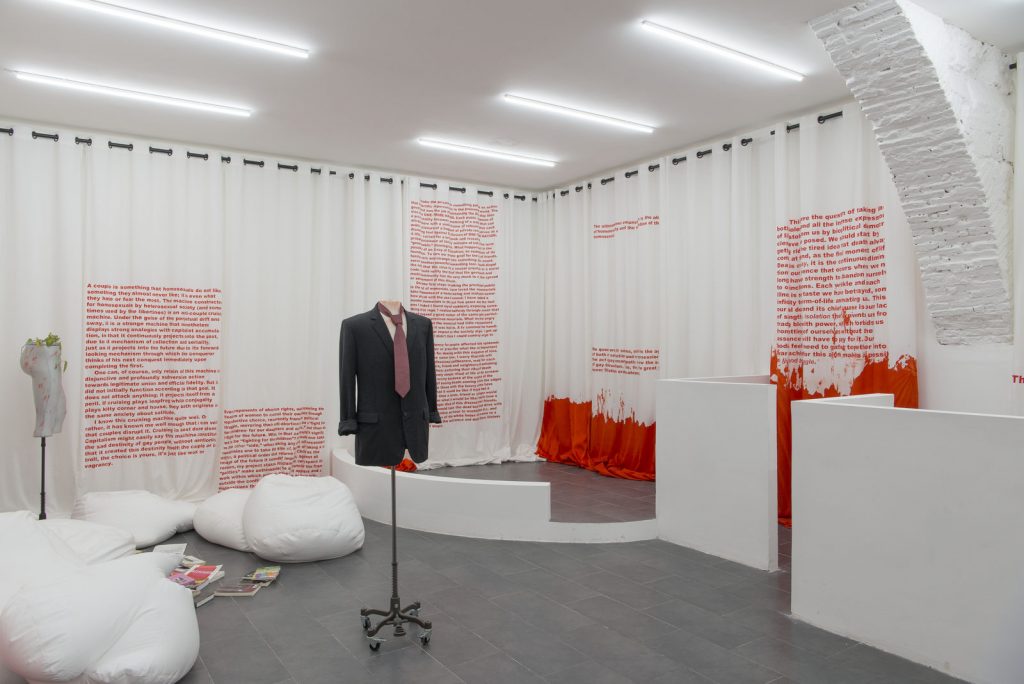
Art is not seasonal.
Our investigation into the galleries at the time of social distancing continues thinking about the future. After Galerie Lelong & co.e Hauser & Wirth, today we give space to the extensive interview with Emanuel Layr, who founded his first gallery in Vienna in 2011 and who in 2016 chose Rome as his second location.
In recent weeks we are witnessing the proliferation of charity initiatives, the first to be called to action were the artists. Do you believe that this model based on the gratuitousness of artistic work can create a risky precedent for the artists themselves and for their market?
«It really depends on the artists, if and how much they can afford to donate. I think it is tricky if the organizers of such events tease not so wealthy and not so known artists with potential attention and success, and then don’t deliver the sales nor the promised success in terms of attention or public appearance. Then of course artists also not always give the best work, which makes it harder to sell… This is why my suggestion to artists is to carefully select events like that and give less but better work. If it is affordable and they can get something out of it as well. I mean there comes the problem.
Generally speaking, I would say every kind of charity is fine and necessary. If the artist can get something out of it, let’s say some attention a fair cut, I think this is totally fine. I don’t like charity events which are not organized well. Then no one gets anything out of it. I personally don’t have problems with someone doing charity events for their own PR reasons. Sometimes, of course, it could look strange if some very wealthy people or companies donate peanuts and get a lot of public appearances. There should be limits and if that goes too far, that is anyhow likely to backfire, as we have seen recently with a prominent painter and gallery».
How much do you think this moment will affect the economy of the art system?
«Tremendous effects! I don’t know where to start but business dropped drastically and everything that we are experiencing in sales and business now is more based on conversations that happened before. So you are really lucky if you could build something in the last months in terms of money and network.
Of course, there are fewer exhibitions and art fairs but I think the main problem is that institutions and larger private collections are having either financial problems as well or they are currently too occupied with restructuring measurements.
Collectors with smaller budgets are of course worried too and very much hesitating with not essential investments. I have the feeling that some people are coming back but it is not easy to communicate works that are more complex in terms of media via online communication. Only a certain kind of art is made for that. So I think the digital communication might help to help to understand known work better, or getting curious about something which will be seen later in real life. I am a big fan of very small events.
Another problem for museums is that some larger institutions are now running out of money because some politicians and museum directors were obsessed with the idea that quality of the museums has to do with the number of visitors.
Blockbuster exhibitions only pay off if you have a lot of visitors. Now museums with this kind of planned exhibitions are in big trouble because they just don’t have visitors… So the question is of course, why museums are doing exhibitions like eg. Van Gogh, Modigliani, Warhol… again and again? In 2021 we will see a lot of 2019 works exhibited and this is good like that because there is no real reason to always show only brand new work. Art is not seasonal. So hopefully we will slow down the overproduction and rethink the fact that it always needs time to experience art? Art can and can not be consumed fast».
Do you think that the with next fairs will it be possible to cover this margin?
«The next fair would have been Artbasel in Basel which now has been postponed to September 14 and the week before Cosmoscow in Moscow ;). Currently, I have no clue if these fairs will really happen, and how successful they will be if they take place. We take art fairs more and more serious and I think the whole situation will make us even more selective, as far there was already in the past no guarantees anymore of selling work at an art fair, even for more commercial galleries. We and the artists did produce artworks or we saved very special works for those occasions. For example for this year’s Art Basel we could get an important historical work by Stano Filko which we can’t and won’t show or offer before the fair happens. Also because it is not so easy to understand the work without seeing it in real. Lena Henke is in the midst of a larger production which we already planned to show in Basel in June, the same for Cecile B. Evans – this will have to wait now.
Interesting as well is that Giovanni Carmine the new curator of Unlimited in Basel selected a large scale installation by Philipp Timischl, which is already in production as well. My feeling is that all of those works can be shown later as well. They are not seasonal things. They are important works which I think will be also interesting in the years to come.. The problem is that we all have invested in having them ready and won’t be able to show or sell them that soon. Fortunately, we can wait a bit, but the question is how long!?
Still lucky that I did not plan more fairs before fall. To be honest I will have to see how the situation will develop to commit to any other fairs because what helps most now is to keep costs very low and this concerns expenses for art fairs as well. Art fairs with even a tiny risk of not being able to cater to the galleries properly will very likely struggle to get galleries. And I am afraid that this will be most of all fairs except Artbasel but also a fair which surprised me a lot is Cosmoscow which I attended last year. And the energy in Moscow is mesmerizing. But I guess no one can say so far if fairs will happen in the fall. If everything goes well I might do a second fair in the fall».
What do you think is the greatest danger that the art system will face and what can be the positive side of this situation?
«I think and also hope that the gallery will be more important again. What I experienced now is that it really helps to have longer exhibition durations. We tried to update and intensive our online presence, website, putting more material such as texts, books, videos online – social media plays a bigger role now and I think it was good to improve those things. But this is something which we can be happy to work on and we will for sure need it later on as well… After a rather hysterical approach at the beginning of the quarantine, I realized that I rather invest in talking to artists, look deeper into their work, reread texts, just trying to understand things and contexts better. The shocking thing was that I realized that I missed quite some things in the last years or read somethings too fast… So to me, it is about knowing the work even better and create new relations built upon this. I want to focus on artworks again and want to share this experience as good as possible. So, in the end, I hope I will enjoy art myself even more, and being able to infect others with that».
Which area of the world do you think will return first to invest in art again?
«I think Hong Kong and Shanghai, have been the first places I heard of reopenings of smaller galleries and institutions. I think that they will be back very soon. Same for Indonesia, S-Korea, and Japan. The whole region has been so dynamic in the last weeks and months, I think most are more than ready to start. In Austria and Germany, we are currently facing a reopening of the galleries. Not so much of the museums, which is a bit strange, because the more interesting museums such as the MUMOK don’t have that many visitors anyhow. Also, I think if the Belvedere would close the Klimt areas, there wouldn’t be that many people either. I would love to see a discussion or competition with the aim of ascertaining the institution with the least amount of visitors, as those places would be the first to reopen in the future. We are into opening the gallery and so I think we are quite fast, thanks to the good situation we do currently have in Austria. Another reason why we did already open the gallery is that I wanted to signalize optimism not only to collectors, also to artists… But I am totally ready to close the gallery again if it becomes necessary».
By what means do you think the younger and more established galleries should be supported?
«Well if collectors are able to, they should buy now and in the next months. This is a very important moment, to re-establish trust and optimism, also to stay motivated. I think that governmental support for galleries would be important as well. A kind of system which has been established in France, where the government / CNAP buys works from artists through galleries. Works that would have been shown at fairs or exhibitions, which have been cancelled. Important works selected by a jury. I think this was one of the smartest gallery artists support ideas I heard of since the beginning of the crisis. What happens too is that it is addressed the same way to galleries and artists».





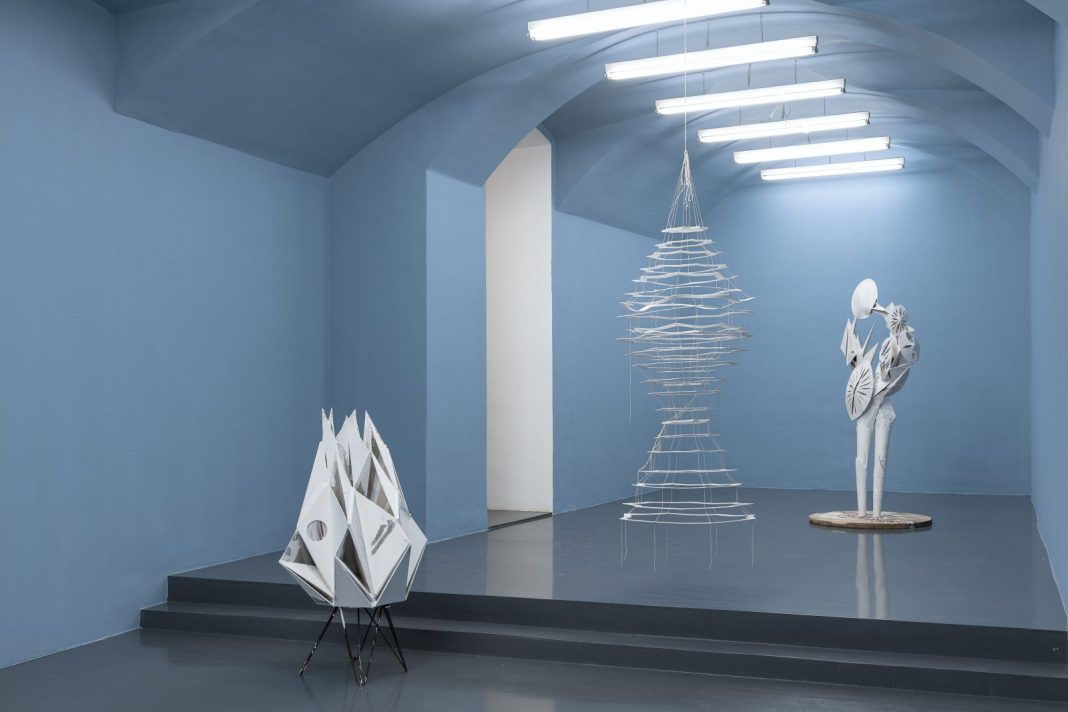
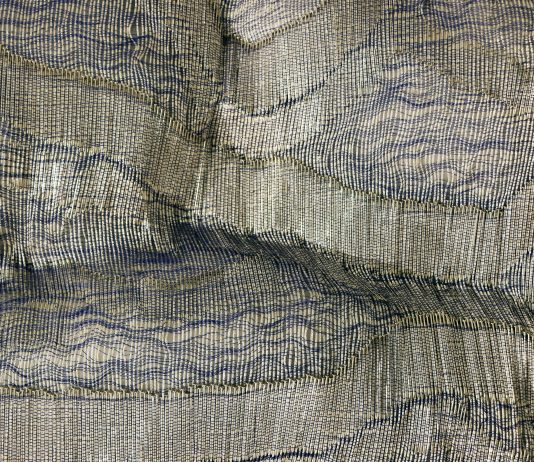
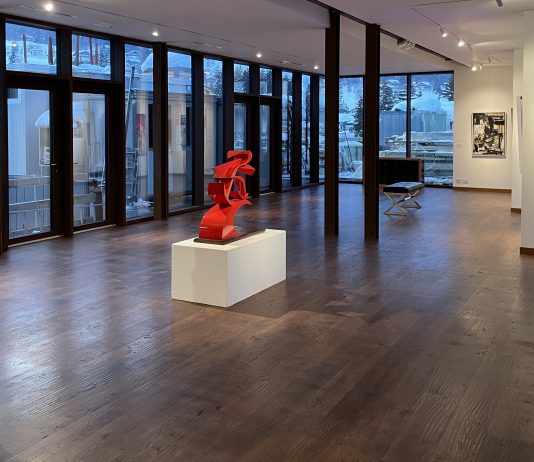
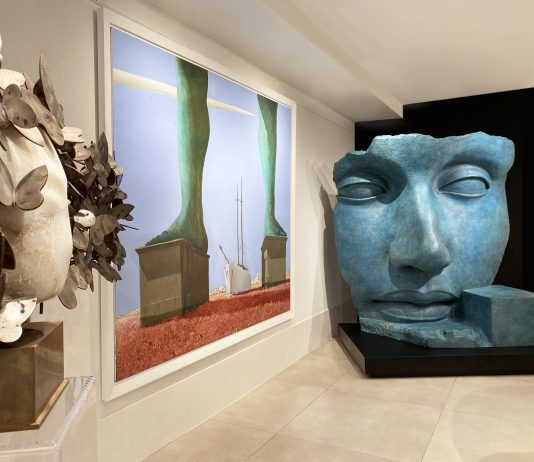
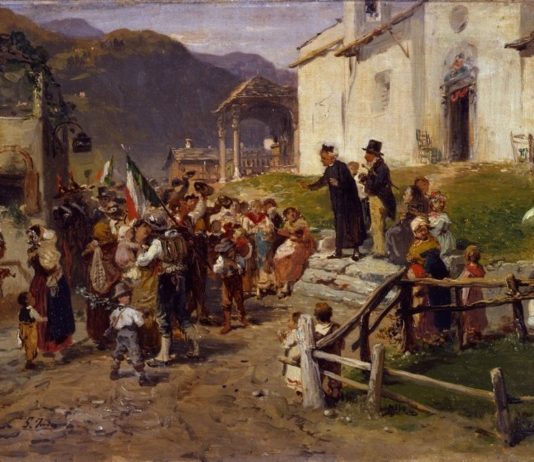

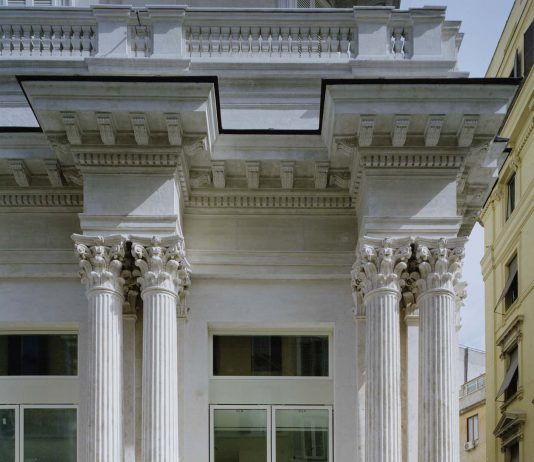
.jpg)








